From legendary pilgrimages such as the El Camino de Santiago in Spain to The Abraham Path in the Middle East, pilgrimages have been a vital way of seeing and travelling for many. Whilst many might view a pilgrimage as a journey for the spiritual, it does not necessarily have to be as such. Many non-religious individuals have trekked down the same path in hopes of seeing the world in a different light, so why not do the same?
Introducing perhaps the most renowned pilgrimage in Asia: Japan’s 88 Temple Pilgrimage.
The 88 Temple Pilgrimage

The 88 Temple Pilgrimage is a 1,200-kilometre route around the perimeter of Shikoku Island. Spanning one to two months, 38 towns/villages and four prefectures, the pilgrimage will give travellers a comprehensive and stunning insight into a not-so-cosmopolitan part of Japan.
A brief history
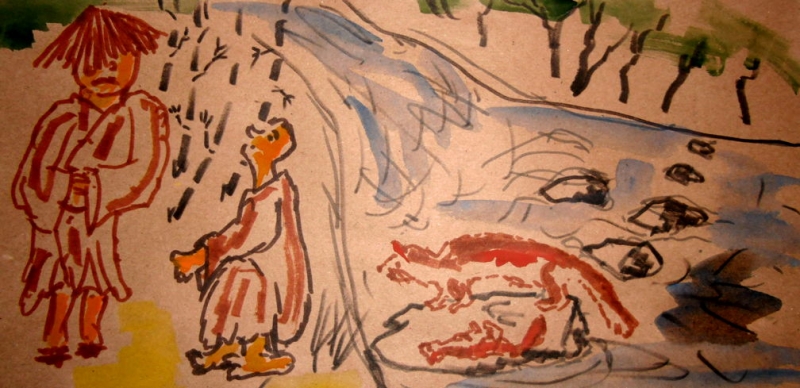
Image credit: Jim O’Neil
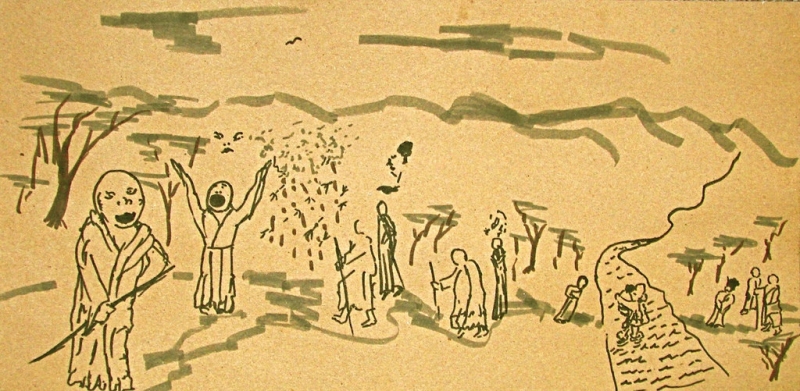
Image Credit: Jim O’Neil
Before we go into the details as to why this would be an epic journey, here are some background information with regards to its origins! It is said that a revered Buddhist monk, known as Kūkai or Kōbō Daishi, founded and restored many of the 88 temples along this pilgrimage. Kōbō Daishi is also the founder of the sacred Shingon Buddhism sect, whose world headquarters is at Mount Koya! It is therefore customary for most pilgrims (o-henro-san) to start their journey at the centre of Shingon Buddhism, Mount Koya! Though Mount Koya is not part of the 88 temples along the route, it is the unofficial starting line for pilgrims looking to walk in the footsteps of Kōbō Daishi.
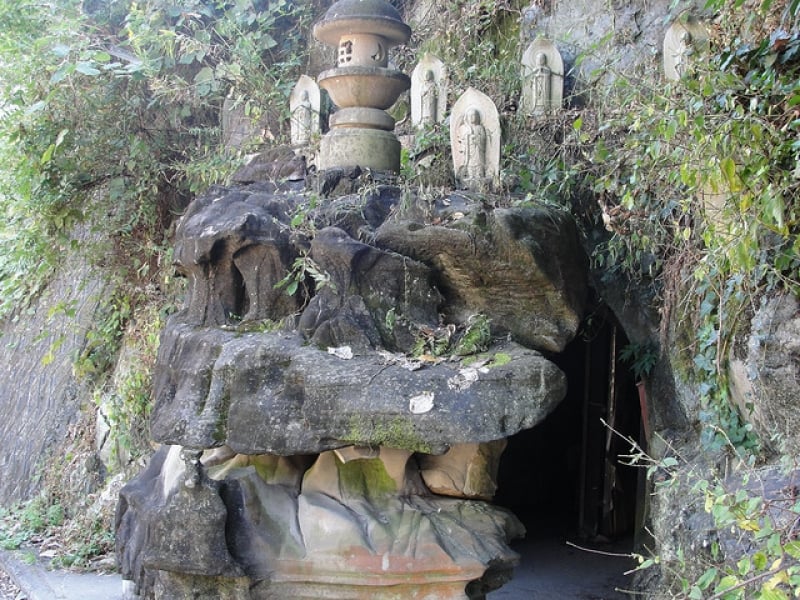
Image credit: RachelH
Each temple along the pilgrimage is unique and unrivalled in its own way! The Ishiteji Temple (51st temple), for example, is famed for a legend surrounding the temple where a man, known as Emon Saburō, was reincarnated as a lord. Ishiteji Temple also hosts a 200-metre-long tunnel which leads to an inner temple where a golden dome-shaped hall resides. The Chikurin-ji Temple is also an important temple in Japanese culture as its temple’s Edo-period garden is listed as a National Monument! The extensive range of sculptures makes it a temple vital to Japan’s Shingon Buddhism as well.
And these are just two of the 88 temples on the pilgrimage, imagine the vast amount of history you would have walked through after completing all 88!
Why make this pilgrimage?
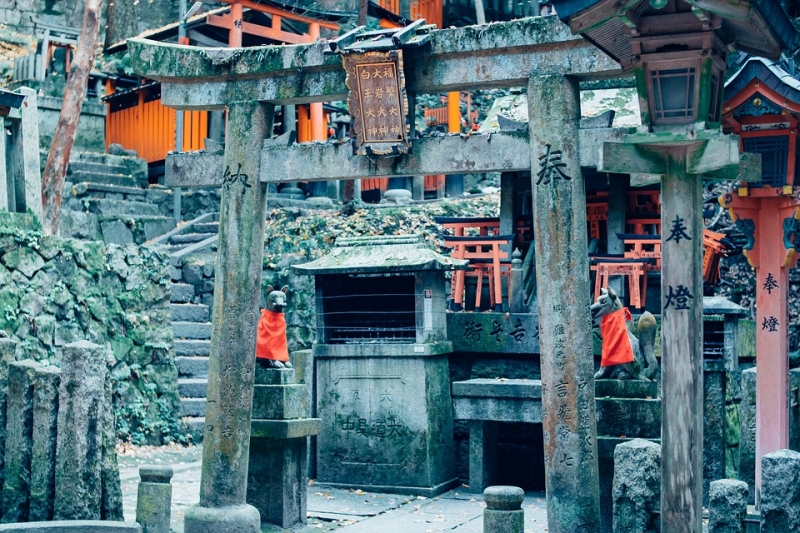
Before we get into the details, why on earth would you even want to put yourself through this ordeal? You’ve been warned that this will be a challenging journey with fluctuating weather conditions, ranging from torrential downpours to the blistering beating of the sun. Not for the faint-hearted, the pilgrimage will be a true test of endurance and perseverance as you ascend and descend hills for kilometres on end.
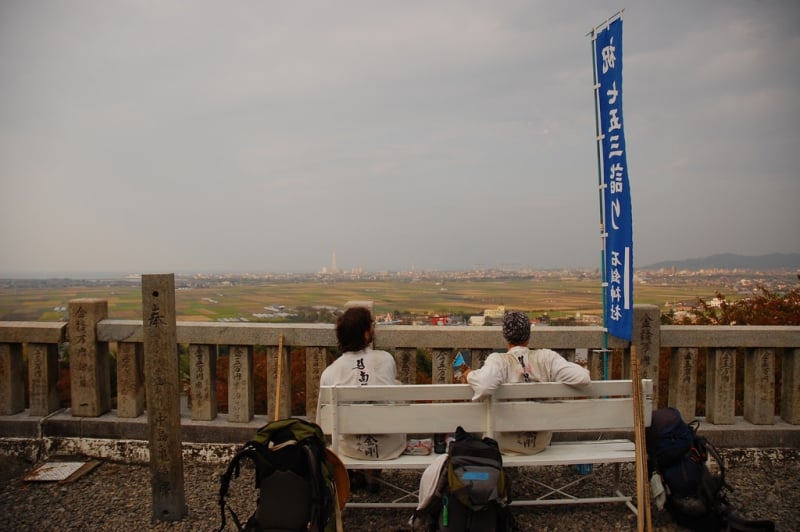
Image credit: Simon Desmarais
The answer is simple: The gruelling task of trudging through acres and acres of Japanese forests will pay off. Pilgrimages are great for creating the solitude needed for individuals to experience tranquility . Take a break from the fast-paced city life and just slow down in this serene environment crafted to allow for some introspectiveness. Ponder on your next great adventure or, heck, just allow your mind to be free from any preoccupations! Where else can you get such a placid surrounding other than when on a pilgrimage? Where hotel stays and amusement parks may bring a sense of exuberance, a pilgrimage brings something invaluable in such settings – detachment from the world.
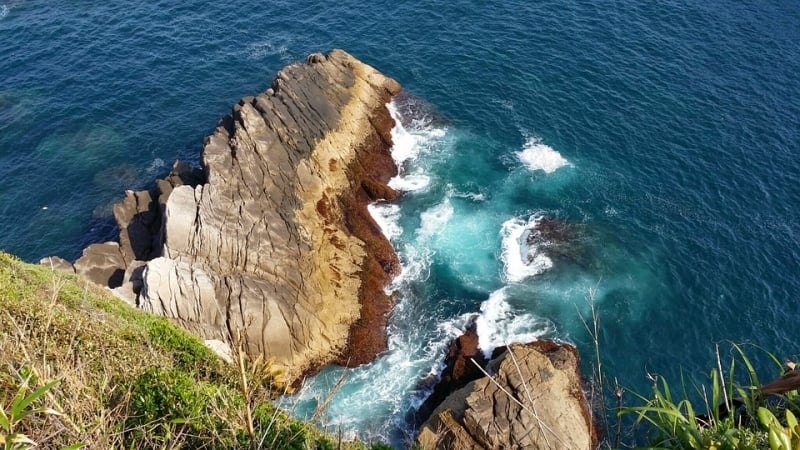
Not to mention, trekking such a long journey doesn’t come without its fair share of natural scenery! You’ll be immersed in the great outdoors on a daily basis, unlike tourists who escape the city on day trips, be it to Mount Fuji or the crowded Arashiyama bamboo forest. Embrace the verdant surroundings and discover a different side of Japan that is void of the typical skyscrapers and ramen bars. Along the way, there’ll be opportunities to hop on different boats to smaller islands surrounding Shikoku as well.
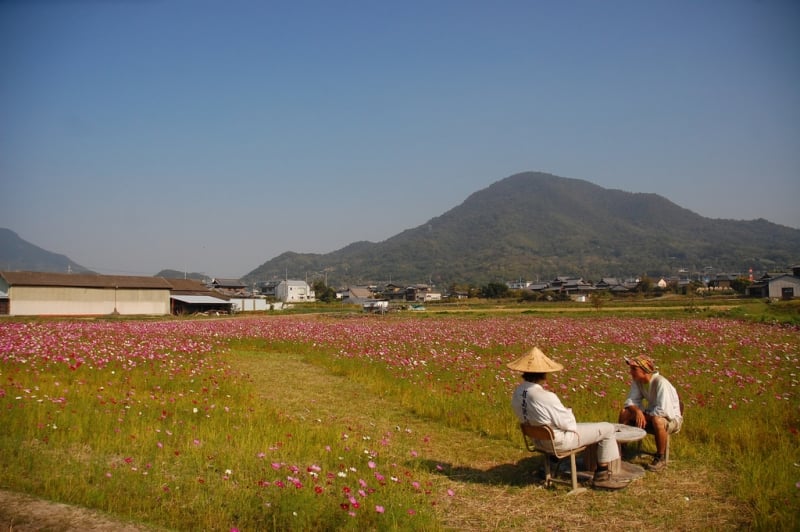
Image credit: Simon Desmarais
Without a doubt, as you go on your 1,200 kilometres pilgrimage, you don’t have to worry about being alone. Many locals often offer gifts (osettai)to travellers on the pilgrimage. As it is disrespectful in Japanese customs to reject such gifts, you’ll soon find your backpack swamped with gifts ranging from rice balls, chocolates, canned drinks to even traditional Japanese ornaments! The journey might not be easy, but it’ll be an epic one filled with lots of unique experiences and newly forged friendships. Amidst all the toiling, we can promise you one thing – it’ll be worth it.
Walking the route
When to go: The best time to walk the route would be during April (spring) or October (autumn). The weather would be pretty cooling with low humidity. The spring and autumn colours of the Japanese outdoors would make for a picturesque walk.
Whilst walking the route in summer means your load is cut down (since less clothing is needed), many unsuspecting travellers often get a bad case of heatstroke in the peak of summer (July and August). Summer months also mean you have to look out for vipers (mamushi) that may be found on steps or in temples.
Winter is a big no-no. The sub-zero temperatures and the possibility of typhoons hitting areas such as the Kochi Prefecture make it a risky walk for pilgrims.
Sample Itinerary:
- Week 1: Temple 1 to Temple 22
- Week 2: Temple 22 to Temple 29
- Week 3: Temple 29 to Temple 38
- Week 4: Temple 38 to Temple 51
- Week 5: Temple 51 to Temple 64
- Week 6: Temple 64 to Temple 99
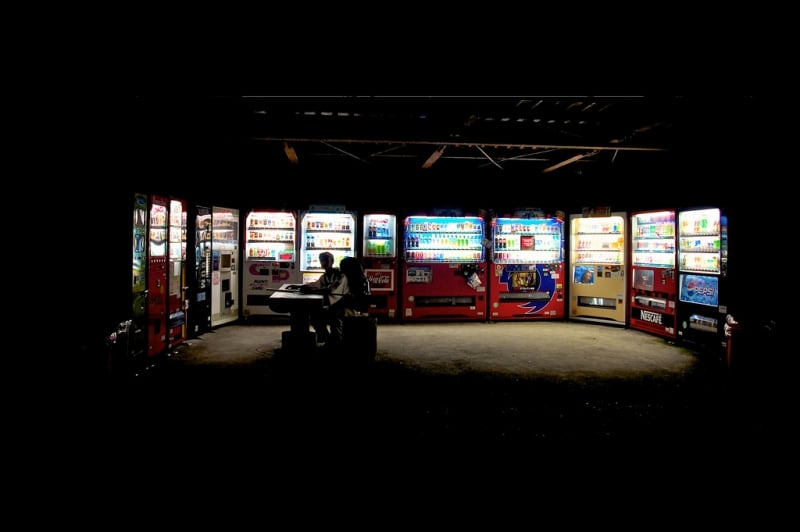
Image credit: Simon Desmarais
Food: Your source of nutrition will mainly come from osettai, pilgrimage eateries, homestay residences, convenience stores and vending machines.
Getting there: Most trains to Mount Koya start from Osaka. From Osaka, get to Namba station on the Nankai Railway Line and take the train towards Gokurakubashi station. Get off at Gokurakubashi station, the gate station to Mt. Koya. Transfer to the Nankai Koyasan Cable Car line, the funicular line to Mt. Koya, at Gokurakubashi. Arrive at the Koyasan stop and take a bus to Senjuinbashi, the city centre, where the tourist information office is located.
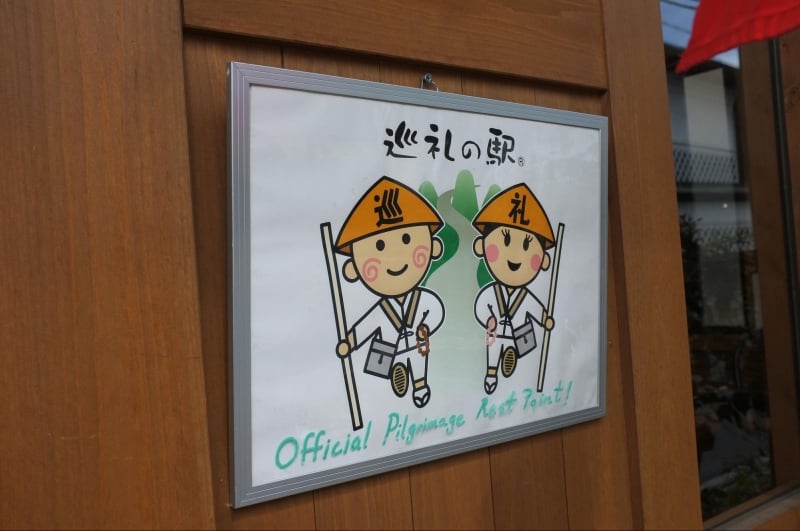
Image credit: melanie_ko
Accommodation: Local homestays, temples or in tents.
Hygiene: Many public toilets house showers for pilgrims to use. Washing machines are also readily available at hostels and local lodging.
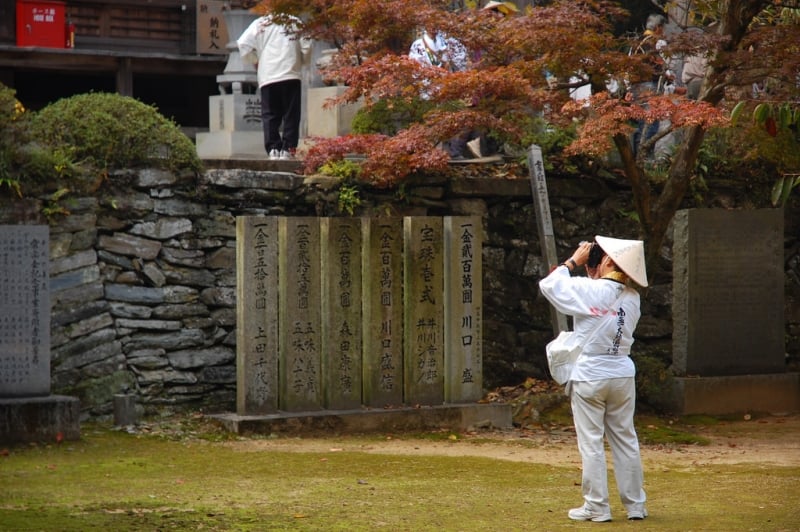
Image credit: Simon Desmarais
Attire: Many pilgrims choose to dress in the traditional pilgrimage attire, consisting of a white coat (byakue), a purple scarf (wagesa), a straw hat (sugegasa), a walking stick (kongōtsue) and stamp book (nōkyōchō) to track their progress from temple to temple. These items can be purchased from both Mount Koya or the first temple, the Ryōzenji temple.
Clothes:
- Hiking shoes for the long distances that you’ll be traversing
- Opt for a pair of sandals at night to give your feet a break
- Hiking pants are also essential as they are lightweight and breathable
- Dry-fit clothes! They dry really quickly and are comfy for long hikes
- Bring along a fleece jacket (even in summer) in case the weather gets perilous
- Sunglasses and cap to protect yourself from the UV rays
Miscellaneous:
- A dry pack would come in handy especially since you’ll be walking along many coastal routes and may get tempted to try out some water activities
- Utensils
- Sleeping bag
- Walking poles
- Ziploc bags for keeping everything dry
- A tent
With that, you’re set to go! The Shikoku Temple pilgrimage is definitely not a conventional attraction in Japan, but it’ll be an extraordinary one. You’ll see a side of Japan that’s not widely promoted and you’ll be well rewarded with more than just souvenirs. The 88 Temple Pilgrimage is your gateway to a whole new world.






